Launching a Flicka from a Trailer
Mike Nelson
Photos and Text © 1998-2007 Mike Nelson
When my co-captain and I were looking for a replacement boat, trailerability was of interest to us. We talked to several Flicka owners about launching from a trailer, and found that only a few thought it was very easy. Since then we bought Eventide (Hull # 356), and have launched her several times from a trailer.
We use a launching method that is quite effective, and wanted to share it with other Flicka owners. Pete Wakefield in New Mexico suggested the original idea for this method to us. We have made a few changes, but found his basic idea sound.
The challenge with launching or retrieving the Flicka from a trailer is to get the trailer deep enough so that the boat will float off or on easily. On our trailer, the boat's waterline is five feet from the ground over the trailer wheels. That means the boat will float off our trailer only when the trailer wheels are quite a bit underwater. On our local ramp, the rear wheels of the trailer need to be about 30 ft into the water passed the waterline on the ramp for the boat to float off. Clearly we can't back the van far enough into the water to meet this condition. Pete told us, he just let his trailer roll back into the water on about 30 feet of chain. The following is a description of how we adapted his idea.
First, 30 to 40 feet of chain is a real pain to handle. We found some synthetic tow strap material in a local farm store that was rated at 15,000 pounds. It is designed to pull cars out of a ditch, and is much lighter and easier to handle and cheaper than chain. Pete also fabricated a third wheel to mount to the tongue of his trailer so that the trailer would have good support as it rolls down the ramp. We found a high load capacity fixed caster with a 12 inch pneumatic tire that is easily mounted on the trailer tongue in the same farm store. We had a local welder weld the caster to a standard trailer tongue jack, as shown in Figure 1. Since we took all our photos during the retrieval process, that's what we will describe here. For launching, the order of steps would be reversed.
1. Check Water Depth
Ensure that their are no obstructions in the water around the ramp, the water's bottom is hard enough to support the load, there is enough water to retrieve the boat safely and there are no sudden drop-off's beyond the sides of the ramp and at least 30 or 40 feet beyond the end of the waterline of the ramp. In tidal areas, you may only be able to launch at high tide - check the local tide tables.
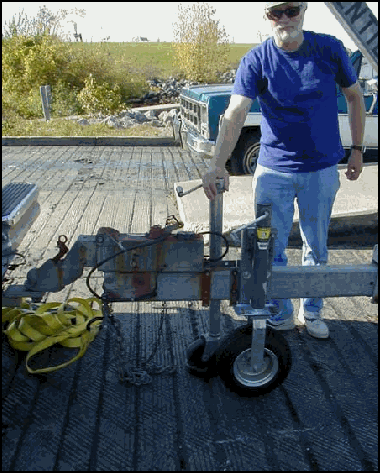
Figure 1. - the heavy-duty caster lowered and ready for use. The trailer jack on the other side will be flipped up next.
2. Prepare Trailer
Back the trailer down to the water, chock the wheels, and lower the jack with the caster, shown in figure 1. Raise the trailer jack out of the way. It is important that the trailer be as straight and parallel to the ramp as possible. If the trailer is not aligned with the ramp, the trailer will roll down the ramp crocked and may roll outside the ramp's edges.
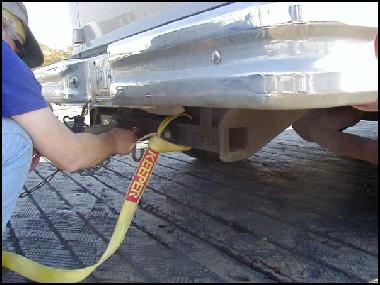
Figure 2a. - attaching tow strap to the truck's tow bar.
3. Attach one end of the tow strap to the trailer, one end to the tow hitch on the vehicle, then detach the trailer, Figure 2a. and 2b. I took advantage of the eye on the strap, and just looped one end through.
Warning: A frayed, chaffed or worn tow strap should not be used.

Figure 2b. - attaching tow strap to trailer. I used a humongous shackle from a tractor.
4. Drive the tow vehicle forward until the tow strap is taut. (see Figure 3).

Figure 3. showing trailer ready to be rolled into the water.
5. Check that no one is behind the trailer or the vehicle.
6. Remove the chocks and then back the trailer into the water until it is close to the boat, Figure 4. Note: We always have one person outside the truck acting as a guide.
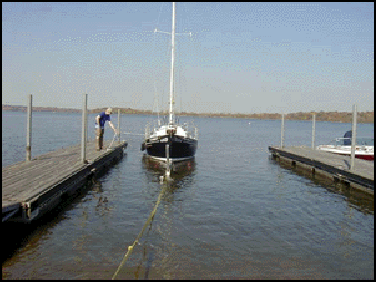
Figure 4. - trailer lowered to boat, and boat being aligned with trailer.
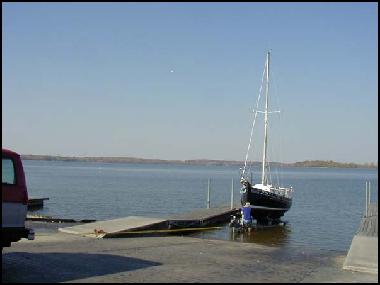
Figure 5a. - attaching winch strap and winching boat onto trailer after pulling trailer tongue out of the water.
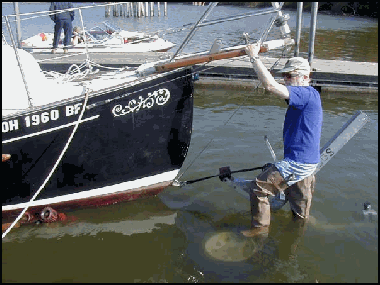
Figure 5b. shows a close-up of trailer winch strap attached to boat.
7. Attach the trailer winch strap to the eye on the bow of the boat, and winch it onto the trailer (Figure 5a. and 5b.). We have one person walk along the dock, holding lines attached to the boat, and pushing or pulling, if needed, to help align the boat on the trailer if it is windy. If your trailer is not designed to self-center the boat, you may want to attach flags to the fenders so you can eyeball the center as you winch it on the trailer.
In Figure 5a and 5b., the trailer has been pulled out a little ways before the final winching was done. This step is necessary on shallower ramps to get the bow eye in the proper position relative to the bowstop on the trailer. For safety reasons, you may want to wear a PFD.
8. Pull the boat and trailer out of the water, as shown in Figure 6.
9. As before, chock the trailer, back the vehicle down to the trailer, and reattach the trailer to it. Flip the caster up, unchock the trailer and carefully drive to a level spot for the mast lowering.
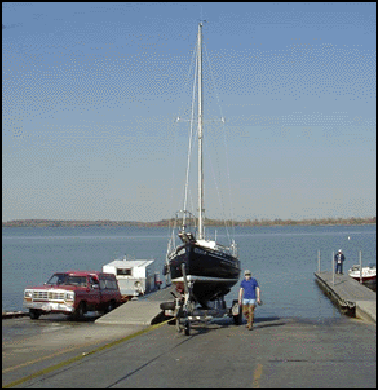
Figure 6. -boat successfully pulled ashore, trailer chocked.
We've had success with this method both locally, in the North Channel, and on the Chesapeake. It is cheaper than paying for a hoist, assuming one is available. On the Chesapeake, we did have to wait for high tide to have enough water depth.
Mike Nelson
S/V Eventide
Photos and Text - © Copyright 1998, 2000, 2001 Mike Nelson
Warnings:
This information is provided in good faith but because launching and retrieving a boat is subject to so many variable, such as the condition of the ramp, the location of the ramp, the boat's trailer, and the operator, as well as other forces, such as acts of God, no warranty is made or implied by the author or the Flicka WebCaptain. Consult with a marine professional who is familiar with launching and retrieving a heavy displacement sailboat, such as the Flicka from a trailer before attempting to launch and retrieving a Flicka. In addition, raising and lowering the mast as described here can be hazardous, and extreme care should be taken to stay out of the path the mast would take if any lines broke or if the wind should cause it to sway out of its intended path. No warranty is made or implied by the author or the Flicka Web Captain about the safety or success of this method.
The caster's load rating (800 lb.) was determined based on Eventide's total loaded weight and the weight of her trailer. This load rating is not put forth as a recommendation or engineered standard. Each person must determine the caster's load rating and wheel diameter for their trailer arrangement based on their boat's total loaded weight and the trailer weight. The total weight of the boat and trailer will vary significantly and is dependent on such factors as trailer make and model, tongue length, stores, equipment and whether the boat has an inboard engine or outboard engine, as well as the amount of fuel and water aboard.
It is important you know how far the trailer must move into the water before the boat is free of its trailer or before it will float back on it. This distance is dependent upon the slope of the ramp and must be determined before launching the boat. We recommend using a long pole and verifying that the ramp is solid all the way to the deepest point at which you expect to need it. The pole can also be used to verify that you have sufficient water depth. Inspect the tow strap for chafe, cuts, splits or frayed areas. A worn, chaffed, cut, split or frayed tow strap should not be used -replace with a new tow strap.